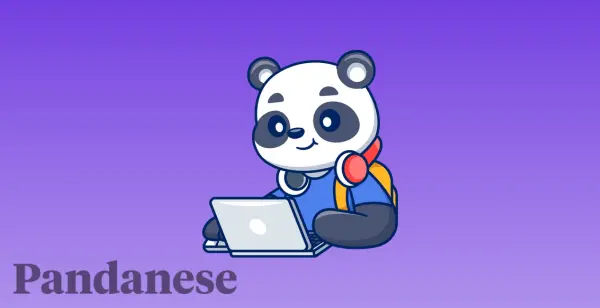
A Condensed History of Chinese Font Design For The Computer
While learning Mandarin, have you ever wondered about where Hanzi began? What about the fonts it comes in?
If you think the writing system is complex, just wait until you learn the quantity of work that goes into creating the various Chinese font designs!
First written Chinese characters: oracle bones
Hanzi’s exact origins remain unknown and are believed to date back to the 2nd millennium BC.
That said, the earliest known inscriptions originated during the Shang Dynasty (18th to 12th centuries BC). Characters would be inscribed onto pieces of bone and turtle under-shells and used for ocular deviation.

Oracle Turtle Script [Shang Dynasty (1600 BC – 1046 BC)] | WorldHistory
Many of these etchings, known as “oracle bones,” have survived to this day and are estimated to date back to at least the 13th century BC if not earlier, which is around the same time the Greeks sailed for Troy in the onset of the Trojan war.
The unification of the Chinese writing system
Over time, these etchings evolved and changed to eventually become the Chinese characters we know today. The most significant historical shift happened during the Qin Dynasty (in the second century BC) which unified the many writing systems of the area into a single system.
Creating simplified Chinese characters
The next major shift came much more recently in the 1950s when communist China simplified the writing system to make it more accessible.
The conventional reader is said to need to know around 2,000 characters to understand a newspaper, and about a thousand more for the average novel today.

Love in Chinese can be 爱 (simplified Chinese) or 愛 (traditional Chinese). Both are pronounced as ài.
Chinese font design on computers
With the evolution of scripts and technology, computers brought a new aspect to the writing arena: fonts. We read all the time, however, have you ever paused to wonder how the fonts we read and write in are produced, especially in a language with thousands of characters?
Believe it or not, producing a font for the Chinese script is incredibly difficult and a multi-year-long process. Although font diversity is considerably more difficult in a language with a writing system of such scale, better technologies for the design, display, and transmission of fonts mean more and better Chinese fonts are on the way.
The difficulty of making a Chinese font for the computer
Consider the symbol “a”. This “a” design for a font is known as a “glyph.”
In Chinese, each character is a “glyph.” For instance, radical and character 水 (shui) which means water. English-language fonts usually comprise around 230 glyphs. A font that covers all of the Latin scripts—meaning over 100 languages—typically only requires as little as 840 glyphs. That said, the simplified version of Chinese already requires nearly 7,000 glyphs.
Traditional Chinese goes all the way up to 13,053 glyphs. It takes six months to create a new font that covers dozens of Western languages for a single designer, yet, Chinese fonts require teams of workers and can still require two or more years.
Phrase 1: Research
In most cases, the research phase takes a full year in and of itself.
This process begins with developing a hypothetical idea for a new font and then builds on it until a set of a few hundred characters has been created. This set then creates a precedent moving forward. Latin typefaces are designed similarly, but the scale is much smaller.
However, another aspect that is important to remember with Latin typefaces is singularity. A Latin font can be developed by one person and therefore more easily stick to one person’s vision.
Chinese fonts must maintain uniformity even though they are developed by teams of people.
Phrase 2: Deciding the Chinese font design style
As with Latin fonts, a crucial initial decision is to determine which font “style” to use.

Chinese font style: Mingti and Heiti | Jiro Maiya
Chinese has two main styles, called Mingti and Heiti, akin to the serif and sans-serif of Latin. Mingti is similar to serif, with extra embellishment at the end of strokes that gives it a more bookish feel. Heiti is a bit like sans-serif: clean, straight lines without extra ornamentation at the ends.
Phrase 3: Chinese radicals variants to consider
Although characters can be broken down into strokes and radicals, these radicals and strokes are not supposed to be identical in all characters.
For instance, many radicals will look different and have different versions depending on where it is placed in the overall Chinese character. For example, the radical 言 can look like this 讠or how 心 can look like 忄.
Even in cases where it is in the same position, such as the left half of the character, the stroke weights and shapes can be slightly different. So any Chinese font design must accommodate all radicals and their variants.
Phrase 4: Using the Chinese font design
However, despite all these difficulties, there are hundreds of millions of Chinese-speaking internet users, many of whom want font alternatives.
Furthermore, a big technology change was the ability to distribute fonts through the web. Users no longer need to have the font registered on their computer to be able to see it when online. Most importantly, customers are willing to pay to have access to these fonts.
In closing
Despite the challenges of making a Chinese font design, these designs are still used today for Chinese native speakers to be able to text and write to each other. Even in English programs, Chinese characters are still able to appear thanks to the research of Chinese fonts.
The easiest way to learn Chinese & build vocabulary

